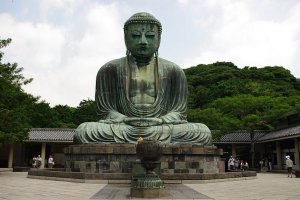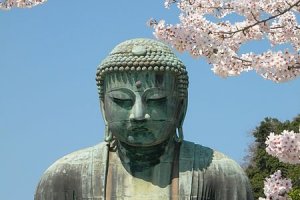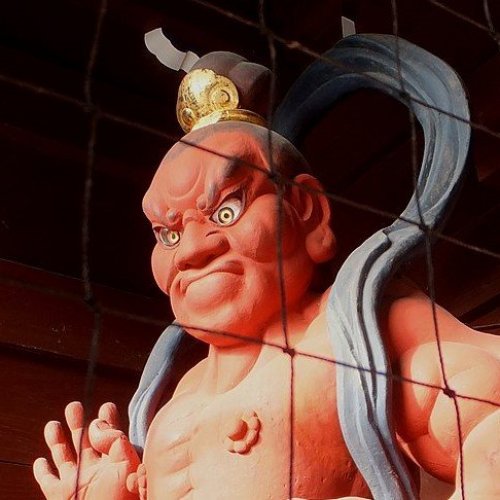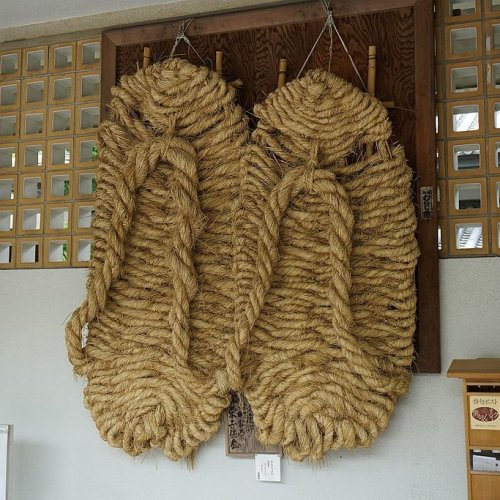 11
11
Kotoku-in

Kotoku-in is the more common name for Taiizan Kotoku-in Shojosen-ji in Kamakura, Kanagawa Prefecture. This Jodo-shu Buddhist temple is known for its Daibutsu, or great Buddha, which is one of the most famous icons of Japan.
The statue, commonly known as the Kamakura Daibutsu (Big Buddha of Kamakura), is a colossal copper image of the Amitabha Buddha. The Buddha, which was declared a national treasure by the Japanese government, is about 11.3 meters high and weighs about 121 tons.
The Kotoku-in belongs to the Jodo sect, a traditional Buddhist sect founded by the priest Honen (1133-1212) who was a follower of Amitabha. According to the Jodo sect's belief system, all people are equal and one only has to sing the "Nenbutsu" to receive the protection of Amitabha and to be reborn in one's "pure land".
Overview
Address
4-2-28, Hase, Kamakura, Kanagawa Prefecture 248-0016, Japan (Map) (Directions)Hours
8:00 - 17:00 Closed nowOpening Hours
Phone Number
0467-22-0703Website
Highlights
Kamakura Daibutsu
Kamakura’s Daibutsu is a beautiful bronze statue built in the mid-13th century (750 years ago). He has been meditating under the sky for about 500 years of those years, after losing the shelter he was originally housed in. When you visit, you might see him soaked in rain, or sweating under the glaring sun, or just enjoying the warm spring sunshine. Whenever you come, his expressive face will touch your heart. Kamakura’s Daibutsu has been kept intact, without any large-scale restorations since it was built.
Discover Kamakura DaibutsuTemple Gate and Nio Statues
The temple gate holds a plaque inscribed with Kotoku-in’s official name and houses a pair of Nio (Vajrapani) images inside the gate. Their fearsome faces are the subject of many visitor's photographs. The Nio were imported from another location in the 18th century.
Huge Warazori
On the inside wall of the corridor to the right facing the Great Buddha rests a pair of huge warazori. The warazori were first woven by children in 1951 with the wish that “the Great Buddha would don them to walk around Japan, bringing happiness to the people.” The Matsuzaka Children’s Club keeps this tradition alive to this day: since 1956, they have continued to make these giant warazori and present them to Kotoku-in once every few years.
General Amenities
- Free guides/pamphlets
Payment Method
- Pay by cash
Access
A 5-10 minute walk from Hase Station on the Enoden Railway Line.
Related Articles
 11
11
Reviews
Inside Kotoku-in

Kamakura Buddha (Kamakura Daibutsu)
The Kamakura Buddha, also known as the Great Buddha of Kamakura, is one of Japan's most revered cultural landmarks. Located at Kotoku-in, a Buddhist..
Near Kotoku-in

Kamakura’s Taisen-kaku Inn
Taisen-kaku is a 100-year-old inn just seconds away from Hase Kanon Temple. The service they provide will leave you with a memorable..
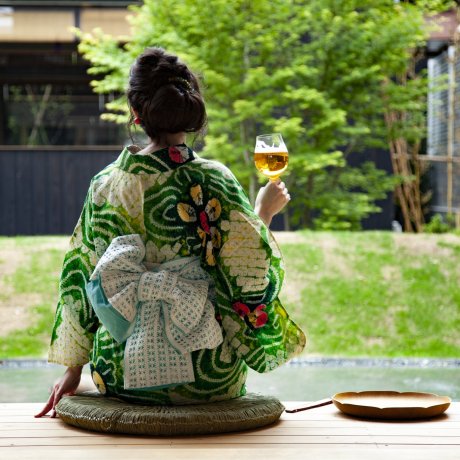
Kishi-ke: a Modern Ryokan
Kishi-ke is traditional, yet modern, Japanese-style inn that aims to connect guests with the present and help them achieve inner..

Hotel Almont Inn Shonan Fujisawa
Fujisawa is located close to such popular tourist destinations as Enoshima and makura. A traveler can get everything necessary for..
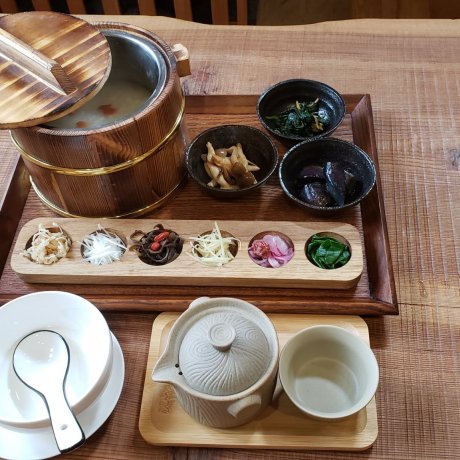
Ki-to-toki
Using animal-free products, brown rice, and locally sourced fresh vegetables, Ki to Toki creates masterful vegetarian meals that are not only delicious..

Kamakura New German
Discover the taste that Kamakura locals are in love with. New German's fluffy custard-filled sponge cakes are a dessert that is sure to impress. The..

Aratama
Taste Aratama's famous fried pork cutlet and fall in love with the fresh flavors. Tonkatsu isn't all that's on the menu. Be sure to try Aratama's..

Hasedera Temple
Kamakura’s Hasedera Temple, a sister temple to Nara’s temple of the same name, is renowned for its 11-headed statue of Kannon, the goddess of mercy...
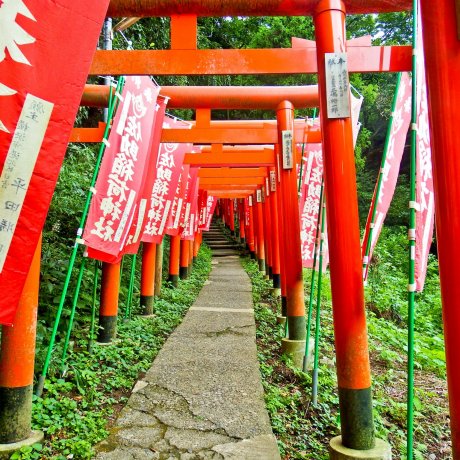
Sasuke Inari Shrine
Sasuke Inari Shrine is a Shinto shrine in Kamakura and the site of the Hidden Village of Kamakura. It is located very near the Zeniarai Benzaiten Ugafuku..

Zeniarai Benzaiten Shrine
Zeniarai Benzaiten Ugafuku Shrine, popularly known simply as Zeniarai Benten, is a Shinto shrine in Kamakura, Kanagawa, Kanagawa prefecture, Japan. ..
